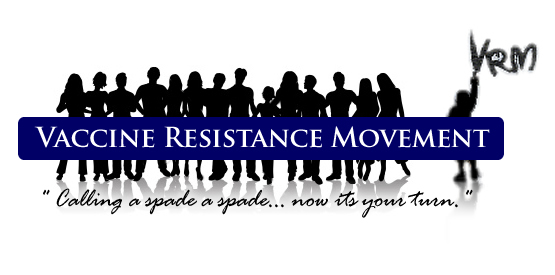![]()
BREAKING NEWS: Vaccine enhanced “Pharmacological Crops” in preliminary stages
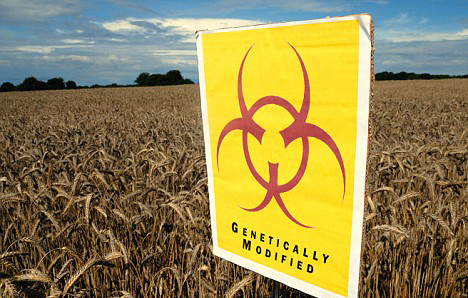 ‘Iowa State University researchers are putting flu vaccines into the genetic makeup of corn, which may someday allow pigs and humans to get a flu vaccination simply by eating corn or corn products. “We’re trying to figure out which genes from the swine influenza virus to incorporate into corn so those genes, when expressed, would produce protein. The big question is whether or not these genes will work when given orally through corn. That is the thing we’ve still got to determine.”
‘Iowa State University researchers are putting flu vaccines into the genetic makeup of corn, which may someday allow pigs and humans to get a flu vaccination simply by eating corn or corn products. “We’re trying to figure out which genes from the swine influenza virus to incorporate into corn so those genes, when expressed, would produce protein. The big question is whether or not these genes will work when given orally through corn. That is the thing we’ve still got to determine.”
According to the researchers, the corn vaccine would also work in humans when they eat corn or even corn flakes, corn chips, tortillas or anything that contains corn, Mr. Harris said. The research is funded by a grant from Iowa State University’s Plant Sciences Institute, and is their Biopharmaceuticals and Bioindustrials Research Initiative.
If the research goes well, the corn vaccine may be possible in five to seven years. In the meantime, the team is trying to expedite the process. “While we’re waiting for Wang to produce the corn, we are starting initial experiments in mice to show that the vaccine might induce an immune response,” Mr. Bosworth said.’
http://www.politicolnews.com/swine-flu-vaccine-in-your-gmo-foods/
———————————————————————————————————————
BREAKING NEWS: Pentagon Military arm ‘Darpa’ now funding Vaccine-Tobacco crops
 ‘The Pentagon’s after a better way to strike back against infectious diseases and bio-threats. Now, a team at Texas A&M may have come up with a way to turn tobacco plants into vaccine-making machines. Darpa, the military’s risk-taking research agency, is investing $40 million into the Texas Plant-Expressed Vaccine Consortium, which will test the tobacco-based method and then offer up 10 million doses of H1N1 vaccines. Once the process has been vetted, the researchers anticipate a scalability that could yield 100 million vaccine doses per month.
‘The Pentagon’s after a better way to strike back against infectious diseases and bio-threats. Now, a team at Texas A&M may have come up with a way to turn tobacco plants into vaccine-making machines. Darpa, the military’s risk-taking research agency, is investing $40 million into the Texas Plant-Expressed Vaccine Consortium, which will test the tobacco-based method and then offer up 10 million doses of H1N1 vaccines. Once the process has been vetted, the researchers anticipate a scalability that could yield 100 million vaccine doses per month.
Plant-based vaccine production has been in the workings for years now, including the successful creation of edible bananas that protect against the Norwalk virus. Last summer, Darpa requested proposals for plant-based options that would rapidly yield protective antigens for the creation of potent vaccines. Tobacco is a particularly good option, because it’s cheap and grows quickly — yielding vaccines in weeks, rather than the several months required for the standard egg-based method that’s been used since the 1950s.’
http://www.wired.com/dangerroom/2010/02/darpa-funded-researchers-tobacco-vs-viral-terror/
 DARPA PROJECT BLUE ANGEL: For the largest program, called AMP for Accelerated Manufacture of Pharmaceuticals, companies in four states are building facilities where they can quickly produce vaccine-grade proteins grown in the cells of tobacco plants. Once they produce the proteins, the goal is for each company to scale up its process to produce 100 million doses of H1N1 flu vaccine per month. Existing vaccine manufacturers worldwide produce a fraction of that — about 300 million doses of vaccine in six months, Magill said.
DARPA PROJECT BLUE ANGEL: For the largest program, called AMP for Accelerated Manufacture of Pharmaceuticals, companies in four states are building facilities where they can quickly produce vaccine-grade proteins grown in the cells of tobacco plants. Once they produce the proteins, the goal is for each company to scale up its process to produce 100 million doses of H1N1 flu vaccine per month. Existing vaccine manufacturers worldwide produce a fraction of that — about 300 million doses of vaccine in six months, Magill said.
Vaccines are produced in steps, beginning with getting a sample of the active virus. From the original virus, “seeds” are used to grow the virus in hundreds of millions of chicken eggs — a time-consuming process developed more than 50 years ago. After the virus particles are grown, they’re purified to make vaccine. Plants with the fastest-growing cells will be able to produce more proteins in a shorter time for vaccines, he explained.
Four companies are working to transform protein-producing tobacco plants from a proof of concept to a demonstration of the capability. The next step will be to develop full industrial processes for producing the proteins. The companies are Fraunhofer USA Center for Molecular Biotechnology in Delaware, Kentucky Bioprocessing in Owensboro, a consortium called Project GreenVax, whose partners are the Texas A&M University system and a Texas company called G-Con, and Medicago USA in North Carolina.
“They’re all using tobacco plants, and there’s a little variation on the theme,” Magill said. “But the approaches — what do you put in the plants, how do you infect the plant cells, what kind of vectors [carriers] do you use, what is the nature of the protein, how is it purified — all of these are actually quite different.” The companies all are making progress, he said. One of them, Fraunhofer, already has a product in Phase 1 clinical trials — the first stage of testing in people. “The final trial will go on for six months, because we have to do safety monitoring,” Magill said. “But we’ll know whether the technology worked probably about the end of January.”
Another Blue Angel project is a technology called Modular Immune In Vitro Constructs, or MIMIC, which Magill calls “an immune system in a test tube.” DARPA created MIMIC to quickly test new vaccines for safety and effectiveness.
http://www.defense.gov/news/newsarticle.aspx?id=61520
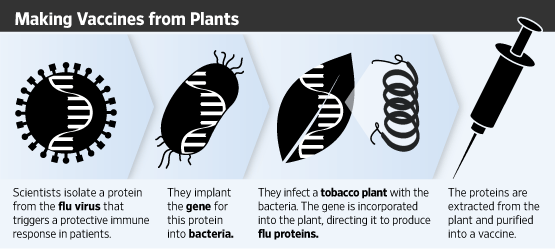 “PROJECT GREENVAX – “Trans-genetic” plant technology: ‘The Defense Advanced Research Projects Agency—which conducts research to protect soldiers from infectious diseases, and also is concerned about the U.S. capability to react swiftly to a bioterrorist attack, among other things—has awarded the consortium $40 million to make an initial 10 million doses of H1N1 vaccine.
“PROJECT GREENVAX – “Trans-genetic” plant technology: ‘The Defense Advanced Research Projects Agency—which conducts research to protect soldiers from infectious diseases, and also is concerned about the U.S. capability to react swiftly to a bioterrorist attack, among other things—has awarded the consortium $40 million to make an initial 10 million doses of H1N1 vaccine.
Texas A&M and closely held firm G-Con will together invest a further $21 million. GreenVax is one of the more ambitious of the plant-based vaccine projects. It is partly based on research done at Fraunhofer USA Center for Molecular Biotechnology, in a partnership with the biotech firm iBio Inc., both based in Newark, Del.
As a first step, researchers at Fraunhofer isolated a protein from the H1N1 virus known to trigger a protective immune response in a patient without causing an infection. A gene for this protein was then introduced into a bacterium. Tobacco plants were placed in a special chamber and dipped into a soup of the bacteria, which caused the plants to get infected with the gene-carrying bacteria.
The infected plants then began to produce the protein from H1N1 in large quantities. The plants grew for about a week. Their leaves were then chopped up and crushed, and the protein from H1N1—the essence of the vaccine—was extracted from the slurry and purified.
http://online.wsj.com/article/SB10001424052748703503804575083611168442980.html
———————————————————————————————————————
BREAKING NEWS: WHO blames narcolepsy outbreak on Finnish genetics
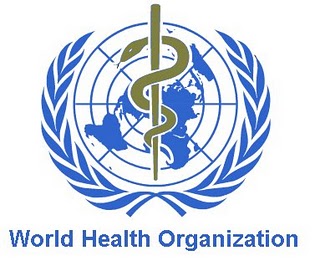 WHO “expert” blames narcolepsy outbreak on a “genetic” predisposition unique amongst the population of Finland; while admitting a “strong association” between the flu vaccination, the genetic makeup of the patients, and the narcolepsy cases. To date, at least 12 countries have informed Pandemrix’s British manufacturer GlaxoSmithKline PLC of narcolepsy cases following vaccination.
WHO “expert” blames narcolepsy outbreak on a “genetic” predisposition unique amongst the population of Finland; while admitting a “strong association” between the flu vaccination, the genetic makeup of the patients, and the narcolepsy cases. To date, at least 12 countries have informed Pandemrix’s British manufacturer GlaxoSmithKline PLC of narcolepsy cases following vaccination.
http://news.bostonherald.com/jobfind/news/healthcare/view/20110208who_genetic_link_to_swine_flu_vaccine_narcolepsy/srvc=home&position=also
———————————————————————————————————————
BREAKING NEWS: Flu vaccine confirmed link to a 9 fold increased risk of narcolepsy in youth
 “Based on the preliminary analyses, the risk of falling ill with narcolepsy among those vaccinated in the 4-19 years age group was nine-fold in comparison to those unvaccinated in the same age group (162 Cases Of Narcolepsy “officially” Reported),” National Narcolepsy Task Force, Finland
“Based on the preliminary analyses, the risk of falling ill with narcolepsy among those vaccinated in the 4-19 years age group was nine-fold in comparison to those unvaccinated in the same age group (162 Cases Of Narcolepsy “officially” Reported),” National Narcolepsy Task Force, Finland
http://www.ksbw.com/health/26689145/detail.html
———————————————————————————————————————
BREAKING NEWS: The World Health Org can’t be trusted as self-regulator
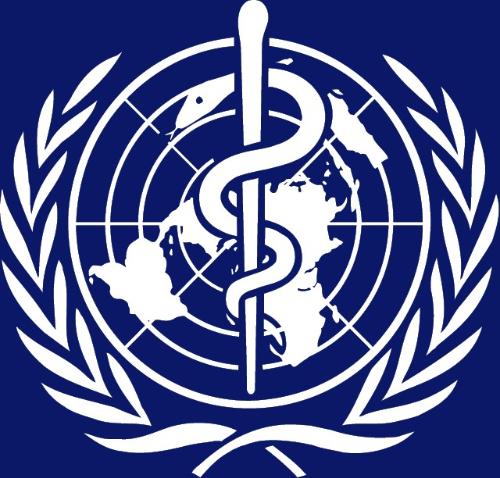 ‘WHO agrees that further investigation is required concerning narcolepsy and Pandemrix® vaccine. In collaboration with a number of European Union Member States, the European Centre for Disease Prevention & Control (ECDC) is currently conducting a joint epidemiological study of narcolepsy and pandemic vaccines.’
‘WHO agrees that further investigation is required concerning narcolepsy and Pandemrix® vaccine. In collaboration with a number of European Union Member States, the European Centre for Disease Prevention & Control (ECDC) is currently conducting a joint epidemiological study of narcolepsy and pandemic vaccines.’
Pandemrix® vaccine has been used in 38 countries worldwide during the 2009/2010 season. An increase in cases of narcolepsy has been observed only in Finland, Sweden and Iceland (including buried reports from Britain & elsewhere).
http://www.euro.who.int/en/what-we-do/health-topics/diseases-and-conditions/mental-health/news2/news/2012/3/pandemrix-vaccine-and-increased-risk-of-narcolepsy
“GlaxoSmithKline is reviewing the report and believes it would be premature to draw any conclusions on a potential association between Pandemrix and narcolepsy until this European investigation has been completed. This investigation is independent of a broader ongoing European Medicines Agency investigation initiated in 2010”
“Based on the preliminary analyses, the risk of falling ill with narcolepsy among those vaccinated in the 4-19 years age group was nine-fold in comparison to those unvaccinated in the same age group”
http://www.silobreaker.com/report-swine-flu-shot-narcolepsy-linked-5_2264330391508746325
———————————————————————————————————————
BREAKING NEWS: 75% of front line workers refusing to take Flu Vaccine
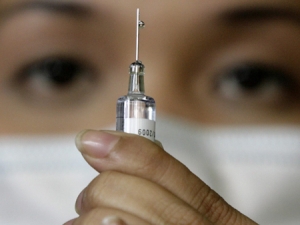 ‘The side effects of the flu vaccine have been causing many UK healthcare workers to question its safety. The latest figures show the uptake for the vaccine has been as low as 26%. Professor Salisbury, director of immunization, told Nursing Times there were “cultural issues” among healthcare workers “about vaccination that have got to be dealt with”.’
‘The side effects of the flu vaccine have been causing many UK healthcare workers to question its safety. The latest figures show the uptake for the vaccine has been as low as 26%. Professor Salisbury, director of immunization, told Nursing Times there were “cultural issues” among healthcare workers “about vaccination that have got to be dealt with”.’
http://vactruth.com/2011/02/01/fearful-uk-healthcare-workers-refuse-flu-vaccine-us-nurse-fired/
———————————————————————————————————————
BREAKING NEWS: Flu vaccine shows a confirmed link to teen narcolepsy
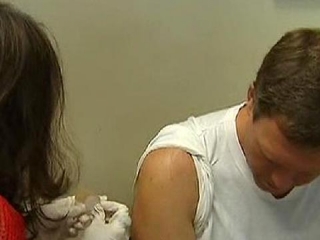 ‘Finnish health officials have found an increased risk of narcolepsy among 4 to 19-year-olds who were given swine flu shots. The National Narcolepsy Task Force says a preliminary study indicates that children vaccinated with Pandemrix “contributed to the observed increase in incidence of narcolepsy” compared to those who were not vaccinated in the same age group.’
‘Finnish health officials have found an increased risk of narcolepsy among 4 to 19-year-olds who were given swine flu shots. The National Narcolepsy Task Force says a preliminary study indicates that children vaccinated with Pandemrix “contributed to the observed increase in incidence of narcolepsy” compared to those who were not vaccinated in the same age group.’
http://www.chron.com/disp/story.mpl/health/7407239.html
———————————————————————————————————————
BREAKING NEWS: US Influenza Vaccine for 2010-11, ‘Fluzone’, linked to 42 reports of febrile convulsions; including 10 children hospitalized
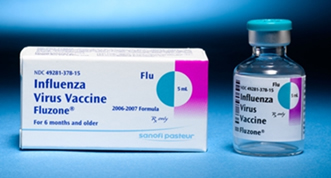 ‘Gov’t officials are investigating an apparent increase in fever-related seizures (febrile convulsions) in young children after they got a flu shot. There have been 36 confirmed reports (42/FDA) of seizures this flu season in children ages 6 months through 2 years. The seizures occurred within one day after they were vaccinated with ‘Fluzone’. Ten of the children were hospitalized.’
‘Gov’t officials are investigating an apparent increase in fever-related seizures (febrile convulsions) in young children after they got a flu shot. There have been 36 confirmed reports (42/FDA) of seizures this flu season in children ages 6 months through 2 years. The seizures occurred within one day after they were vaccinated with ‘Fluzone’. Ten of the children were hospitalized.’
http://news.yahoo.com/s/ap/20110120/ap_on_he_me/us_med_flu_vaccine
‘The Sanofi-Aventis flu vaccine known as “Fluzone” is causing febrile seizures in children, the FDA revealed yesterday. According to the FDA, 42 cases of seizures have been reported in children receiving the Fluzone vaccine. Most of the children suffering seizures are under the age of two.’
http://www.naturalnews.com/031075_vaccines_seizures.html#ixzz1BpWB2s9k
Fluzone: Package insert: Fluzone vaccine (Influenza Virus Vaccine), an inactivated influenza virus vaccine, for intramuscular use, is prepared from influenza viruses propagated in embryonated chicken eggs. The virus-containing allantoic fluid is harvested and inactivated with formaldehyde. Influenza virus is concentrated and purified in a linear sucrose density gradient solution using a continuous flow centrifuge. The virus is then chemically disrupted using a non-ionic surfactant, polyethylene glycol p-isooctylphenyl ether, (Triton® X-100) producing a “split virus”. The split virus is further purified and then suspended in sodium phosphate-buffered isotonic sodium chloride solution.
Fluzone vaccine has been standardized according to the US Public Health Service (USPHS) requirements for the 2008-2009 influenza season and is formulated to contain 45 micrograms (μg) hemagglutinin per 0.5 mL dose in the recommended ratio of 15 μg HA of each of the following 3 strains: A/Brisbane/59/2007 (H1N1), A/Uruguay/716/2007 (A/Brisbane/10/2007-like strain) (H3N2), and B/Florida/04/2006. Gelatin 0.05% is added as a stabilizer. Each 0.5 mL dose may contain residual amounts of formaldehyde (not more than 100 μg), polyethylene glycol p-isooctylphenyl ether (not more than 0.02%), and sucrose (not more than 2.0%).
Each 0.25 mL dose contains a total of 22.5 μg and each 0.5 mL dose contains a total of 45 μg of influenza virus hemaglutinin of each of the following 3 strains: A/Brisbane/59/2007 (H1N1), A/Uruguay/716/2007 (A/Brisbane/10/2007-like strain) (H3N2), and B/Florida/04/2006.
Multi-dose vial, 5 mL, contains thimerosal, a mercury derivative, added as a preservative. Each 0.5 mL dose contains 25 μg mercury.
Post-Marketing Experience –
The following additional events have been reported during post-approval use of Fluzone vaccine. Because these events are reported voluntarily from a population of uncertain size, it is not always possible to reliably estimate their frequency or establish a causal relationship to vaccine exposure.
1. Blood and Lymphatic System Disorders: Thrombocytopenia, lymphadenopathy
2. Immune System Disorders: Anaphylaxis, other allergic/hypersensitivity reactions (including urticaria, angioedema)
3. Nervous System Disorders: GBS, convulsions, myelitis (including encephalomyelitis and transverse myelitis), facial palsy (Bell’s palsy), optic neuritis/neuropathy, brachial neuritis, syncope (shortly after vaccination), dizziness, paresthesia
4. Vascular Disorders: Vasculitis, vasodilation/flushing
Respiratory, Thoracic and Mediastinal Disorders: Dyspnea, pharyngitis, rhinitis
5. Skin and Subcutaneous Tissue Disorders: Stevens-Johnson syndrome
6. General Disorders and Administration Site Conditions: Fever, pain, pruritis, asthenia/fatigue, pain in extremities, chest pain
http://www.whale.to/vaccine/fluzone.pdf
Febrile convulsions occur in young children when there is a rapid increase in their body temperature. It affects up to 1 in 20 children between the ages of one and four but can affect children between six months and about five years old.
- The attack often begins with the child losing consciousness, and shortly afterwards the body, legs and arms go stiff.
- The head is thrown backwards and the legs and arms begins to jerk.
- The skin goes pale and may even turn blue briefly.
- The attack ends after a few minutes and the shaking stops. The child goes limp, and then normal colour and consciousness slowly return.
- Some children regain consciousness faster than others.
FORMALDEHYDE – used as “a preservative & disinfectant”, causes proteins to irreversibly bind to your DNA, known to cause cancer, chronic bronchitis, eye irritation when exposed to the body’s immune system.
POLYETHYLENE GLYCOL: A component also found in anti-freeze. The most common form of antifreeze contains ethylene glycol. A less common form of antifreeze contains propylene glycol. Propylene glycol is sometimes used as a food additive and the CDC says that propylene glycol is ‘“generally recognized as safe”. One unusual circumstance the CDC notes is a case of propylene glycol poisoning under a condition of high dose absorption. This is not likely applicable to vaccination. The CDC also notes that skin sensitization (allergy) can result. Given that allergies and asthma are elevated in vaccinated children the injection of propylene glycol may be connected. The CDC does not specify if direct injection of this compound would constitute “very unusual circumstances.”
THIMEROSAL (MERCURY) – a neurotoxin linked to psychological, neurological & immunological problems. Nervous system damage, kidney disease, birth defects, dental problems, mood swings, mental changes, hallucinations, memory loss, nerve damage and inability to concentrate can occur. Symptoms also include tremors, loss of dermal sensitivity, slurred speech and, in rare cases, even death and paralysis. This additive alone was the catalyst for another recent Class Action Lawsuit organized by mothers of children born with Autism & the many related behavioral disorders associated with it. Autism is now occurring at levels never seen before in history, 1 in 67. The average used to be 1 in 20,000. Thimerosal Mercury is added to vaccines ostensibly to sterilize the giant multi-dose vats containing the serum.
TRITON® X-100: Traces of Triton X-100, made by Dow Chemical, can remain in the vaccine solution. Product information on this compound states the following: “Excellent detergent, dispersant and emulsifier for oil-in-water systems. Uses: Household & industrial cleaners, paints & coatings, pulp & paper, textile, agrochemical, metal working fluids, oilfield chemicals. Identical to POLYSORBATE 80 (also referred to as Tween 80) – a type of detergent stabilizer commonly found in vaccines which is linked to infertility & severe allergic reactions (ie. anaphylaxis). Neonatal female rats were injected with Tween 80 after birth. Treatment accelerated maturation, prolonged the oestrus cycle & induced persistent vaginal oestrus. Ovaries were without corpora lutea & had degenerative follicles. It also lossens the blood barrier in the brain.
EARLY VACCINE TRAUMA REPORT FROM AUSTRALIA (HIGH TEMPERATURES & FEBRILE CONVULSIONS) – The Australian Health Minister, Kim Hames, says 45 children have been taken to hospital suffering high temperatures and febrile convulsions after receiving the vaccination. Dr Hames says the program will be suspended until the department finishes its investigation. He says parents who have had their children vaccinated should take precautions.”If it’s longer than 12 hours ago then there is no risk. But if it’s in the last 12 hours they should make sure that they give their child paracetamol and then take every effort to make sure that the temperature of their child is settled.”
http://www.abc.net.au/news/stories/2010/04/22/2880521.htm?site=news
———————————————————————————————————————
BREAKING NEWS: CNN wants to make anti-vaccine parents pay higher premiums, labels Dr. Wakefield as a “grifter in a lab coat”, part of a “tribe”
 “Parents who refuse to vaccinate their kids should pay substantially higher health insurance premiums….the (link) between secondhand smoke and a litany of health problems pales in comparison to the link between going unvaccinated and spreading “secondhand disease.”
“Parents who refuse to vaccinate their kids should pay substantially higher health insurance premiums….the (link) between secondhand smoke and a litany of health problems pales in comparison to the link between going unvaccinated and spreading “secondhand disease.”
“The anti-vaccine movement’s lynchpin, Dr. Andrew Wakefield, has been shown to be nothing more than a grifter in a lab coat, with the prestigious British Medical Journal calling his work “an elaborate fraud.” It’s hard for me to believe that some parents still refuse to vaccinate their children. But they do, frightened by the rants and raves of anti-vaccine fundamentalists such as Jenny McCarthy, who can effortlessly get on “Oprah” or any other TV talk show to advance what is nothing short of a myth…the Wakefield-McCarthy tribe” Dr. Rahul K. Parikh/CNN editorial
http://www.cnn.com/2011/OPINION/01/20/parikh.childhood.immunizations/index.html
———————————————————————————————————————
BREAKING NEWS: Dr. Paul Offit/Nothing but a wolf in sheep’s clothing
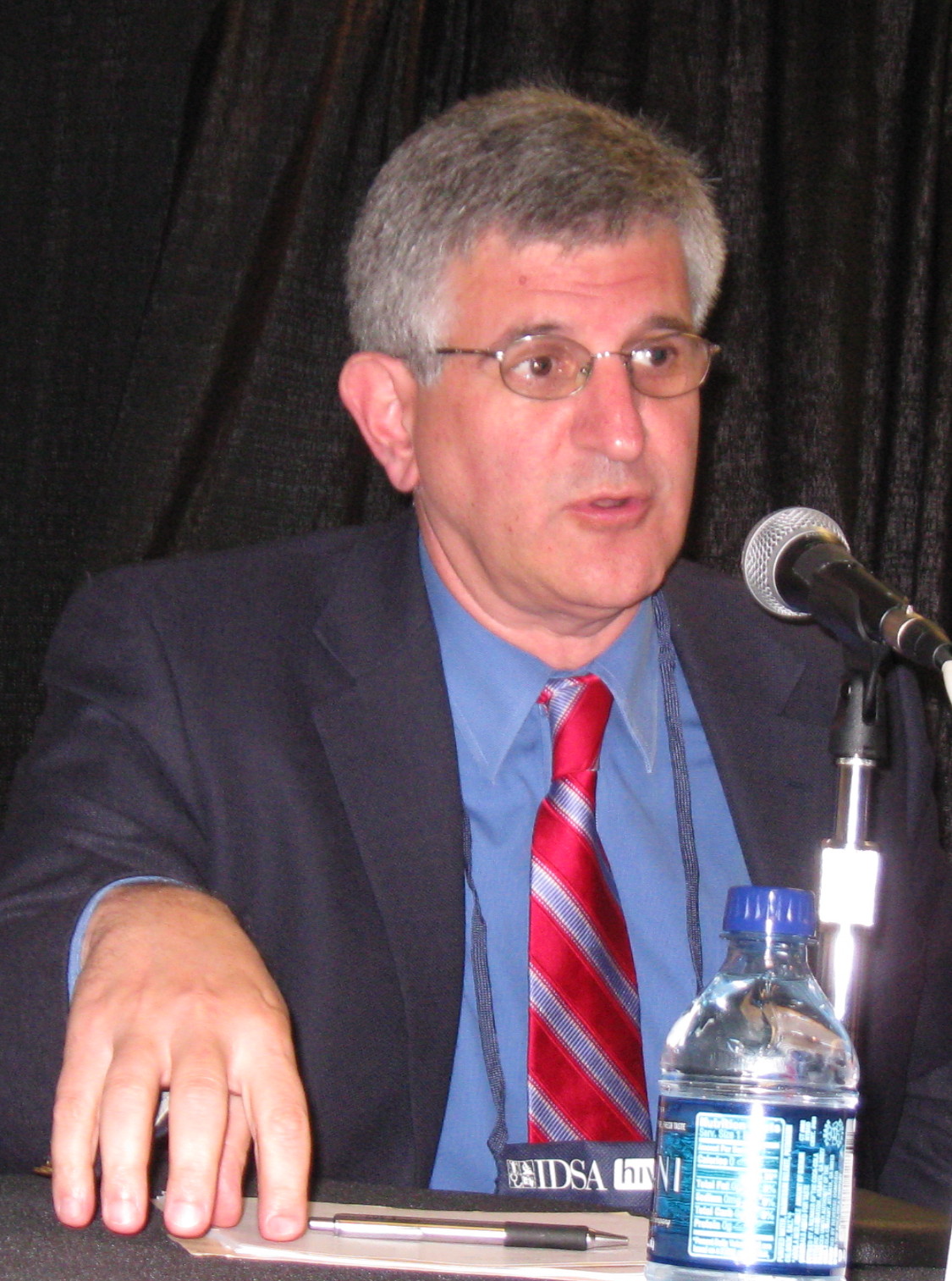 “Given the number of antibody-producing cells in a child’s bloodstream, and the number of immunological components contained in vaccines, it is reasonable to conclude that babies could effectively make antibodies to about 100,000 vaccines at one time.” Dr. Paul Offit worth $29-46 million in royalties from Rotatek vaccine patent
“Given the number of antibody-producing cells in a child’s bloodstream, and the number of immunological components contained in vaccines, it is reasonable to conclude that babies could effectively make antibodies to about 100,000 vaccines at one time.” Dr. Paul Offit worth $29-46 million in royalties from Rotatek vaccine patent
http://www.chop.edu/export/download/pdfs/articles/vaccine-education-center/too-many-vaccines.pdf
Paul Offit.com (website dedicated to exposes the lies)
http://www.pauloffit.com/
http://www.whale.to/vaccine/handley56.html
“A vaccinated vs. unvaccinated study is unethical. There’s not an institutional review board in the world that would approve that kind of study, because we know that vaccines work, we know that if you don’t give a large number of children vaccines that some of them are going to get whooping cough or chicken pox, some of them may be hospitalized or even killed by the diseases — you can’t do that kind of study.” Dr. Paul Offit, author of ‘Deadly Choices: How the Anti-Vaccine Movement Threatens Us All’
http://www.blogher.com/frame.php?url=http://thinkingautismguide.blogspot.com/2011/01/interview-dr-paul-offit.html
———————————————————————————————————————
BREAKING NEWS: UK Gov’t using threat of artificial scarcity & “healthy segment of population to encourage greater vaccine uptake
‘The “worried well” should be banned from paying for the flu jab privately at pharmacies, according to a leading doctor, as chemists begin to run out of the vaccine.
 Healthy people buying the flu jab have compounded shortages in the NHS and left those at greatest risk struggling to get the vaccine, claimed Dr Clare Gerada, the chairman of the Royal College of GPs. Pharmacies and GPs are reporting that they have run out as thousands seek protection from the worst winter flu outbreak in a decade.’
Healthy people buying the flu jab have compounded shortages in the NHS and left those at greatest risk struggling to get the vaccine, claimed Dr Clare Gerada, the chairman of the Royal College of GPs. Pharmacies and GPs are reporting that they have run out as thousands seek protection from the worst winter flu outbreak in a decade.’
———————————————————————————————————————
BREAKING NEWS: World Health Organization chief addresses growing problem of vaccine ‘mistrust’ among the population
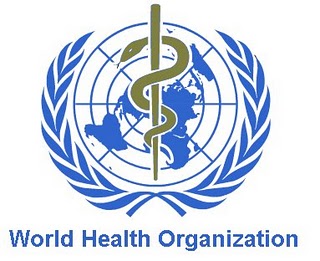 “In some cases, persuading the public to seek vaccination has become even more problematic than during the pandemic…the problem of public mistrust extends well beyond influenza vaccines. We may need to accept the fact that public perceptions about vaccine safety can be permanently changed by unfounded fears, to an extent that no amount of evidence can change the public’s mind. This is a worrisome new trend that needs to be addressed.” Margaret Chan/Director-General, WHO
“In some cases, persuading the public to seek vaccination has become even more problematic than during the pandemic…the problem of public mistrust extends well beyond influenza vaccines. We may need to accept the fact that public perceptions about vaccine safety can be permanently changed by unfounded fears, to an extent that no amount of evidence can change the public’s mind. This is a worrisome new trend that needs to be addressed.” Margaret Chan/Director-General, WHO
http://www.who.int/dg/speeches/2011/eb_20110117/en/index.html
———————————————————————————————————————
BREAKING NEWS: UK Government reluctantly bans 2010-11 Flu vaccine for ‘under-fives’
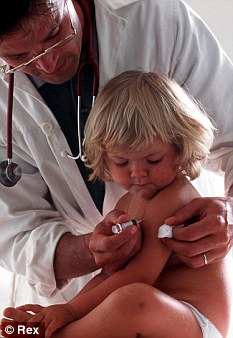 ‘Ministers and senior Government advisers last night ruled that the immunisation programme for those aged six months to five years – which was quietly cancelled earlier this year – would not have significant ‘gain’.
‘Ministers and senior Government advisers last night ruled that the immunisation programme for those aged six months to five years – which was quietly cancelled earlier this year – would not have significant ‘gain’.
The decision came after the Government’s interim chief medical officer, Professor Dame Sally Davies, held crisis talks with advisers from the Joint Committee on Vaccination and Immunisation over whether the jab should be offered to under-fives.
http://www.dailymail.co.uk/health/article-1342933/Flu-jab-given-fives.html#ixzz1BLr14j19
———————————————————————————————————————
BREAKING NEWS: GlaxoSmithKline quietly re-introduces Thimerosal into UK Flu Vaccine ‘Pandemrix’
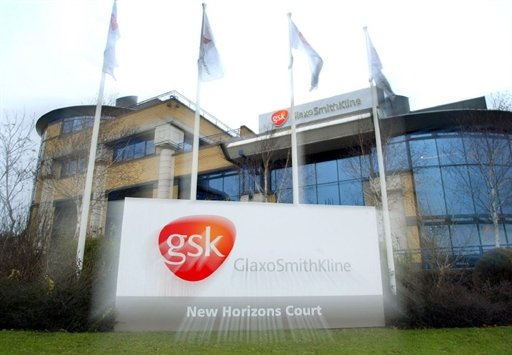 “Thimerosal plays an important role in preventing bacterial contamination. Regulators across the world have concluded there is no evidence the level of thimerosal in vaccines poses a health risk.” GlaxoSmithKline
“Thimerosal plays an important role in preventing bacterial contamination. Regulators across the world have concluded there is no evidence the level of thimerosal in vaccines poses a health risk.” GlaxoSmithKline
“Extensive studies have failed to find any evidence that these low levels of Thimerosal carry any risk of neurotoxicity.” UK Medicines & Healthcare Products Regulatory Agency
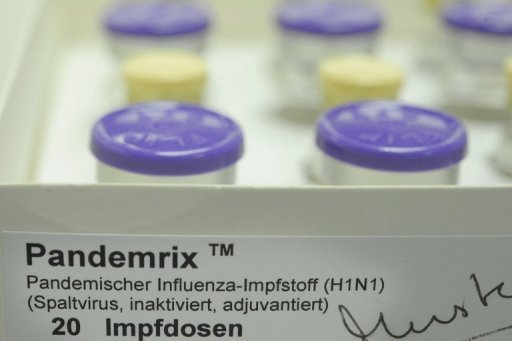 ‘UP to a million under-fives have been inoculated against the flu virus with a controversial vaccine containing poisonous mercury. Pandemrix has been given to almost a quarter of all healthy babies and young children as well as thousands of older children with health problems. Inquiries by the Sunday Express reveal it contains a preservative made with a form of mercury that was phased out of childhood vaccines in 2004 after fears about its safety.’
‘UP to a million under-fives have been inoculated against the flu virus with a controversial vaccine containing poisonous mercury. Pandemrix has been given to almost a quarter of all healthy babies and young children as well as thousands of older children with health problems. Inquiries by the Sunday Express reveal it contains a preservative made with a form of mercury that was phased out of childhood vaccines in 2004 after fears about its safety.’
http://www.express.co.uk/posts/view/222000/Child-flu-vaccine-contains-mercuryChild-flu-vaccine-contains-mercury#ixzz1BJQXjZbL
———————————————————————————————————————
BREAKING NEWS: GlaxosmithKline implicated in systemic clinical drug trial deception & insider fraud
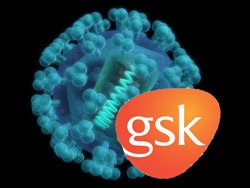 ‘A psychiatrist on the payroll of GlaxoSmithKline has been sentenced to 13 months in prison after pleading guilty to committing research fraud in clinical trials for antidepressant Paxil. Palazzo enrolled children who did not actually suffer from major depressive or obsessive compulsive disorder, then falsified records & psychiatric diagnoses. GlaxoSmithKline (manuf. of Paxil) paid Palazzo $5,000 for every child she enrolled in the study.
‘A psychiatrist on the payroll of GlaxoSmithKline has been sentenced to 13 months in prison after pleading guilty to committing research fraud in clinical trials for antidepressant Paxil. Palazzo enrolled children who did not actually suffer from major depressive or obsessive compulsive disorder, then falsified records & psychiatric diagnoses. GlaxoSmithKline (manuf. of Paxil) paid Palazzo $5,000 for every child she enrolled in the study.
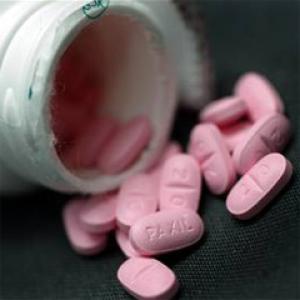 The case’s significance goes beyond simple research fraud, as Glaxo is now defending itself against charges that for 15 years it deliberately concealed evidence that Paxil increases the risk of suicide in children. Glaxo is also defending itself against accusations that it manipulated data to conceal the risks of its diabetes blockbuster Avandia, and that it failed to warn parents that Paxil may cause birth defects if taken by pregnant women. The company has already agreed to pay more than $1 billion to settle roughly 700 birth defect lawsuits; another 100 or so suits pending.’
The case’s significance goes beyond simple research fraud, as Glaxo is now defending itself against charges that for 15 years it deliberately concealed evidence that Paxil increases the risk of suicide in children. Glaxo is also defending itself against accusations that it manipulated data to conceal the risks of its diabetes blockbuster Avandia, and that it failed to warn parents that Paxil may cause birth defects if taken by pregnant women. The company has already agreed to pay more than $1 billion to settle roughly 700 birth defect lawsuits; another 100 or so suits pending.’
http://www.cchrint.org/2010/11/29/psychiatrist-on-payroll-of-glaxo-pleads-guilty-to-research-fraud/
———————————————————————————————————————
BREAKING NEWS: California County Sues GlaxoSmithKline Over Diabetes Drug ‘Avandia’
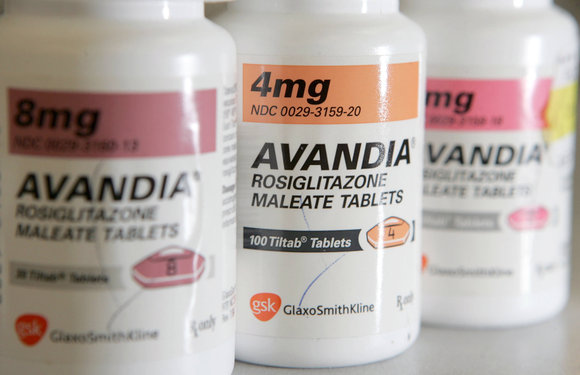 ‘“GSK’s unlawful conduct has cost patients, their insurers & gov’t payers millions of dollars, and it has caused needless suffering to thousands of Californians,” explained Miguel Marquez, Santa Clara County’s acting county counsel. “This is precisely the sort of corporate malfeasance that California law prohibits.” GSK has denied all allegations and continues to claim the FDA-approved drug is safe, despite recent reports that show the drug is responsible for causing thousands of heart attacks.
‘“GSK’s unlawful conduct has cost patients, their insurers & gov’t payers millions of dollars, and it has caused needless suffering to thousands of Californians,” explained Miguel Marquez, Santa Clara County’s acting county counsel. “This is precisely the sort of corporate malfeasance that California law prohibits.” GSK has denied all allegations and continues to claim the FDA-approved drug is safe, despite recent reports that show the drug is responsible for causing thousands of heart attacks.
The Senate Committee Report revealed back in February proved that GSK knew about the risks associated with Avandia for years but did nothing about it.’
http://www.naturalnews.com/028918_false_advertising_Big_Pharma.html
———————————————————————————————————————
BREAKING NEWS: GlaxoSmithKline Fined $750 Million (For Tainted Drugs Paxil & Avandia) Based On Whistleblower Testimony
‘GlaxoSmithKline Plc, the U.K.’s largest drugmaker, will pay $750 million to settle a U.S. whistleblower lawsuit over the sale of defective drugs. Glaxo was accused in court papers of selling tainted drugs under false pretenses. The medicines, made at a Glaxo plant in Cidra, Puerto Rico, were misidentified as a result of product mix-ups, according to papers filed in federal court in Boston. The affected drugs included the antidepressant Paxil CR and the diabetes treatment Avandamet. [Note that this is a combination drug that includes Avandia – ed].
The settlement includes a criminal fine and forfeiture totaling $150 million and a $600 million civil settlement under the False Claims Act and related state claims, the Justice Department said in a statement. We will not tolerate corporate attempts to profit at the expense of the ill and needy in our society — or those who cut corners that result in potentially dangerous consequences to consumers,’ Carmen M. Ortiz, the U.S. Attorney in Boston, said at yesterday’s news conference.’
http://hcrenewal.blogspot.com/2010/10/glaxosmithkline-subsidiary-pleads.html
VRM: Former Pharmaceutical Representative Gwen Olsen Exposes Systemic Industry Fraud:
http://vaccineresistancemovement.org/?p=5920
Ex Drug Rep Gwen Olsen on Manipulating Doctors
http://www.youtube.com/watch?v=kOW8LNU2hFE&feature=related
Pharma Insider reveals typical dirty tricks used to influence doctors & exploit Industry competitors –
Part I: http://www.youtube.com/watch?v=oeavs_3SL2E
part 2: http://www.youtube.com/watch?v=Wb_K49a2ERU&feature=related
‘Pharmaceutical Industry Sales-rep training to get the maximum results out of your presentation –
How to profile physicians based on their personality types, so you would know how to be most influential with that doctor and get them to prescribe your drug:
1. Analytical type: Approach him with a research study. People who like numbers, so provide them with that type of information.
2. Amiable type : You can get them to do almost anything that you want them to do because they’re people pleasers who want to make you happy. You can lean on these people as opinion leaders if you want them to promote drugs ‘off label’ for you with other practices, or with other physicians.
3. Driver type: Doctors in charge. You have to take the back seat and let them think they’re leading the conversation; that you’re not teaching them anything, you’re just talking to them.’ Gwen Olsen
“Competitive Intelligence is the process by which one company learns about, and begins to understand, the competitive business activities of another company.” Former Pharma rep
Paxil: General Side effects –
A) Paxil withdrawal Body:
Paxil withdrawal Dry Mouth – The usual amount to moisture in the mouth is noticeably less.
Paxil withdrawal Sweating Increased – A large quantity of perspiration that is medically caused.
B) Paxil withdrawal Cardiovascular (Involving the heart and the blood vessels):
Paxil withdrawal Palpitation – Unusual and not normal heartbeat, that is sometimes irregular, but rapid and forceful thumping or fluttering. It can be brought on by shock, excitement, exertion, or medical stimulants. A person is normally unaware of his/her heartbeat.
Paxil withdrawal Hypertension – is high blood pressure, which is a symptom of disease in the blood vessels leading away from the heart. Hypertension is known as the “silent killer”. The symptoms are usually not obvious, however it can lead to damage to the heart, brain, kidneys and eye, and even to stroke and kidney failure. Treatment includes dietary and lifestyle changes.
Paxil withdrawal Bradycardia – The heart rate is slowed from 72 beats per minute, which is normal, to below 60 beats per minute in an adult.
Paxil withdrawal Tachycardia – The heart rate is speeded up to above 100 beats per minute in an adult. Normal adult heart rate is 72 beats per minute.
Paxil withdrawal ECG Abnormal – A test called an electrocardiogram (ECG) that records the activity of the heart. It measures heartbeats as will as the position and size of the heart’s four chambers. It also measures if there is damage to the heart and the effects of drugs or mechanical devices like a pacemaker on the heart. When the test is abnormal this means that one or more of the following are present: heart disease, defects, beating too fast or too slow, disease of the blood vessels leading from the heart or of the heart valves, and/or a past or about to occur heart attack.
Paxil withdrawal Flushing – The skin all over the body turns red.
Paxil withdrawal Varicose Vein – Unusually swollen veins near the surface of the skin that sometimes appear twisted and knotted, but always enlarged. They are called hemorrhoids when they appear around the rectum. The cause is attributed to hereditary weakness in the veins aggravated by obesity, pregnancy, pressure from standing, aging, etc. Severe cases may develop swelling in the legs, ankles and feet, eczema and/or ulcers in the affected areas.
C) Paxil withdrawal Gastrointestinal (Involving the stomach and the intestines):
Paxil withdrawal Abdominal Cramp/Pain – Sudden, severe, uncontrollable and painful shortening and thickening of the muscles in the belly. The belly includes the stomach as well as the intestines, liver, kidneys, pancreas, spleen, gall bladder, and urinary bladder.
Paxil withdrawal Belching – Noisy release of gas from the stomach through the mouth; a burp.
Paxil withdrawal Bloating – Swelling of the belly caused by excessive intestinal gas.
Paxil withdrawal Constipation – Difficulty in having a bowel movement where the material in the bowels is hard due to a lack of exercise, fluid intake, and roughage in the diet, or due to certain drugs.
Paxil withdrawal Diarrhea – Unusually frequent and excessive, runny bowel movements that may result in severe dehydration and shock.
Paxil withdrawal Dyspepsia – Indigestion. This is the discomfort you experience after eating. It can be heartburn, gas, nausea, a bellyache or bloating.
Paxil withdrawal Flatulence – More gas than normal in the digestive organs.
Paxil withdrawal Gagging – Involuntary choking and/or involuntary throwing up.
Paxil withdrawal Gastritis – A severe irritation of the mucus lining of the stomach either short in duration or lasting for a long period of time.
Paxil withdrawal Gastroenteritis – Condition where membranes of stomach & intestines are irritated.
Paxil withdrawal Gastroesophageal Reflux – A continuous state where stomach juices flow back into the throat causing acid indigestion and heartburn and possibly injury to the throat.
Paxil withdrawal Heartburn – A burning pain in the area of the breastbone caused by stomach juices flowing back up into the throat.
Paxil withdrawal Hemorrhoids – Small rounded purplish swollen veins that either bleed, itch or are painful and appear around the anus.
Paxil withdrawal Increased Stool frequency – Diarrhea
Paxil withdrawal Indigestion – Unable to properly consume and absorb food in the digestive tract causing constipation, nausea, stomach ache, gas, swollen belly, pain, general discomfort or sickness.
Paxil withdrawal Nausea – Stomach irritation with a queasy sensation similar to motion sickness and a feeling that one is going to vomit.
Paxil withdrawal Polyposis Gastric – Tumors that grow on stems in the lining of the stomach, which usually become cancerous.
Paxil withdrawal Swallowing Difficulty – A feeling that food is stuck in the throat or upper chest area and won’t go down, making it difficult to swallow.
Paxil withdrawal Toothache – Pain in a tooth above and below the gum line.
Paxil withdrawal Vomiting – Involuntarily throwing up the contents of the stomach and usually getting a nauseated, sick feeling just prior to doing so.
D) Paxil withdrawal General:
Paxil withdrawal Allergy – The extreme sensitivity of body tissues triggered by substances in the air, drugs, or foods cause reaction ie. sneezing, itching, asthma, hay fever, skin rashes, nausea, vomiting.
Paxil withdrawal Anaphylaxis – A violent, sudden, and severe drop in blood pressure caused by a re-exposure to a foreign protein or a second dosage of a drug that may be fatal unless emergency treatment is given right away.
Paxil withdrawal Asthenia – A physically weak condition.
Paxil withdrawal Chest Pains – Severe discomfort in the chest caused by not enough oxygen going to the heart because of narrowing of the blood vessels or spasms.
Paxil withdrawal Chills – Appearing pale while cold and shivering; sometimes with a fever.
Paxil withdrawal Edema of Extremities – Abnormal swelling of the body’s tissue caused by the collection of fluid.
Paxil withdrawal Fall – To suddenly lose your normal standing upright position as if you were shot.
Paxil withdrawal Fatigue – Loss of normal strength so as to not be able to do the usual physical and mental activities.
Paxil withdrawal Fever – Abnormally high body temperature, the normal being 98 degrees Fahrenheit or 37 degrees Centigrade in humans, which is a symptom of disease or disorder in the body. Body is affected by feeling hot, chilled, sweaty, weak/exhausted. If fever goes too high, death can result.
Paxil withdrawal Hot Flashes – Brief, abnormal enlargement of the blood vessels that causes a sudden heat sensation over the entire body. Women in menopause will sometimes experience this.
Paxil withdrawal Influenza-like Symptoms – Demonstrating irritation of the respiratory tract (organs of breathing) such as a cold, sudden fever, aches and pains, as well as feeling weak and seeking bed rest, which is similar to having the flu.
Paxil withdrawal Leg Pain – A hurtful sensation in the legs that is caused by excessive stimulation of the nerve endings in the legs and results in extreme discomfort.
Paxil withdrawal Malaise – Somewhat unclear feeling of discomfort you get when start to feel sick.
Paxil withdrawal Pain in Limb – Sudden, sharp and uncontrolled leg discomfort.
Paxil withdrawal Syncope – A short period of light headedness or unconsciousness (black-out) also know as fainting caused by lack of oxygen to the brain, an interruption in blood flowing to the brain.
Paxil withdrawal Tightness of Chest – Mild or sharp discomfort, tightness or pressure in the chest area (anywhere between the throat and belly). The causes can be mild or seriously life-threatening because they include the heart, lungs and surrounding muscles.
Paxil withdrawal Hemic and Lymphatic Disorders (Involving the blood and the clear fluids in the tissues that contain white blood cells)
Paxil withdrawal Bruise – Damage to the skin resulting in a purple-green-yellow skin coloration that’s caused by breaking the blood vessels in the area without breaking the surface of the skin.
Paxil withdrawal Anemia – A condition where the blood is no longer carrying enough oxygen, so the person looks pale and easily gets dizzy, weak and tired. More severely, a person can end up with an abnormal heart, as well as breathing and digestive difficulties. The causes of anemia are not enough protein in the red blood cells, or missing and chemically destroyed red blood cells, as well as diseased or destroyed bone marrow.
Paxil withdrawal Nosebleed – Blood lost from the part of the face that has the organs of smell and is where the body takes in oxygen.
Paxil withdrawal Hematoma – Broken blood vessels that cause a swelling in an area on the body.
Paxil withdrawal Lymphadenopathy Cervical – The lymph nodes in the neck, which are part of the body’s immune system get swollen and enlarge by reacting to the presence of a drug. The swelling is the result of the white blood cells multiplying in order to fight the invasion of the drug.
E) Paxil withdrawal Metabolic and Nutritional Disorders (Energy and health):
Paxil withdrawal Arthralgia – Sudden sharp nerve pain in one or more joints.
Paxil withdrawal Arthropathy – Having joint disease or abnormal joints.
Paxil withdrawal Arthritis – Painfully inflamed and swollen joints. The reddened and swollen condition is brought on by a serious injury or shock to the body either from physical or emotional causes.
Paxil withdrawal Back Discomfort – Severe physical distress in the area from the neck to the pelvis along the backbone.
Paxil withdrawal Bilirubin Increased – Bilirubin is a waste product of the breakdown of old blood cells. Bilirubin is sent to the liver to be made water-soluble so it can be eliminated from the body through emptying the bladder. Drug can interfere with or damage normal liver function creating liver disease.
Paxil withdrawal Decreased Weight – Uncontrolled and measured loss of heaviness or weight.
Paxil withdrawal Gout – A severe arthritis condition that is caused by the dumping of a waste product called uric acid in the tissues and joints. It can become worse and cause the body to develop a deformity after going through stages of pain, inflammation, severe tenderness, and stiffness.
Paxil withdrawal Hepatic Enzymes Increased – An increase in the amount of paired liver proteins that regulate liver processes causing a condition where the liver functions abnormally.
Paxil withdrawal Hypercholesterolemia – Too much cholesterol in the blood cells.
Paxil withdrawal Hyperglycemia – An unhealthy amount of sugar in the blood.
Paxil withdrawal Increased Weight – A concentration and storage of fat in the body accumulating over a period of time caused by unhealthy eating patterns, that can predispose the body to many disorders and diseases.
Paxil withdrawal Jaw Pain – The pain due to irritation and swelling of the nerves associated with the mouth area where it opens and closes just in front of the ear. Some of the symptoms are pain when chewing, head aches, losing your balance, stuffy ears or ringing in the ears, and teeth grinding.
Paxil withdrawal Jaw Stiffness – The result of squeezing and grinding the teeth while asleep that can cause your teeth to deteriorate as well as the muscles and joints of the jaw.
Paxil withdrawal Joint Stiffness – Loss of free motion, flexibility where any two bones come together.
Paxil withdrawal Muscle Cramp – When muscles contract uncontrollably without warning and do not relax. The muscles of any of the body’s organs can cramp.
Paxil withdrawal Muscle Stiffness – Tightening of muscles making it difficult to bend.
Paxil withdrawal Muscle Weakness – Loss of physical strength.
Paxil withdrawal Myalgia – A general widespread pain and tenderness of the muscles.
Paxil withdrawal Thirst – A strong, unnatural craving for moisture/water in the mouth and throat.
F) Paxil withdrawal Nervous System (Sensory channels):
Paxil withdrawal Carpal Tunnel Syndrome – Pinched nerve in wrist/causes pain, tingling, numbing.
Paxil withdrawal Coordination Abnormal – A lack of normal, harmonious interaction of the parts of the body when it is in motion.
Paxil withdrawal Dizziness – Losing one’s balance while feeling unsteady and lightheaded which may lead to fainting.
Paxil withdrawal Disequilibrium – Lack of mental and emotional balance.
Paxil withdrawal Faintness – A temporary condition where one is likely to go unconscious and fall.
Paxil withdrawal Headache – A sharp or dull persistent pain in the head
Paxil withdrawal Hyperreflexia – A not normal and involuntary increased response in the tissues connecting the bones to the muscles.
Paxil withdrawal Light-headed Feeling – Uncontrolled and usually brief loss of consciousness caused by lack of oxygen to the brain.
Paxil withdrawal Migraine – Reoccurring severe head pain usually with nausea, vomiting, dizziness, flashes or spots before the eyes, and ringing in the ears
Paxil withdrawal Muscle Contractions Involuntary – Spontaneous and uncontrollable tightening reaction of the muscles caused by electrical impulses from the nervous system.
Paxil withdrawal Muscular Tone Increased – Uncontrolled and exaggeration muscle tension. Muscles are normally partially tensed and this is what gives us muscle tone.
Paxil withdrawal Paresthesia – Burning, prickly, itchy, or tingling skin with no obvious or understood physical cause.
Paxil withdrawal Restless Legs – A need to move the legs without any apparent reason. Sometimes there is pain, twitching, jerking, cramping, burning, or a creepy-crawly sensation associated with the movements. It worsens when a person is inactive and can interrupt one’s sleep so one feels the need to move to gain some relief.
Paxil withdrawal Shaking – Uncontrolled quivering and trembling as if one is cold and chilled.
Paxil withdrawal Sluggishness – Lack of alertness and energy, as well as being slow to respond or perform in life.
Paxil withdrawal Tics – A contraction of a muscle causing a repeated movement not under the control of the person usually on the face or limbs.
Paxil withdrawal Tremor – A nervous and involuntary vibrating or quivering of the body.
Paxil withdrawal Twitching – Sharp, jerky and spastic motion sometimes with a sharp sudden pain.
Paxil withdrawal Vertigo – A sensation of dizziness with disorientation and confusion.
G) Paxil withdrawal Psychiatric Disorders (Mental and emotional):
Paxil withdrawal Aggravated Nervousness – Progressively worsening/irritated/troubled state of mind.
Paxil withdrawal Agitation – Suddenly violent and forceful, emotionally disturbed state of mind.
Paxil withdrawal Amnesia – Long term or short term, partial or full memory loss created by emotional or physical shock, severe illness, or a blow to the head where the person was caused pain and became unconsciousness.
Paxil withdrawal Anxiety Attack – Sudden and intense feelings of fear, terror, and dread physically creating shortness of breath, sweating, trembling and heart palpitations.
Paxil withdrawal Apathy – Complete lack of concern or interest for things that ordinarily would be regarded as important or would normally cause concern.
Paxil withdrawal Appetite Decreased – Having a lack of appetite despite the ordinary caloric demands of living with a resulting unintentional loss of weight.
Paxil withdrawal Appetite Increased – An unusual hunger causing one to overeat.
Paxil withdrawal Auditory Hallucination – Hearing things without the voices or noises being present.
Paxil withdrawal Bruxism – Grinding and clenching of teeth while sleeping.
Paxil withdrawal Carbohydrate Craving – A drive and craving to eat foods rich in sugar and starches (sweets, snacks and junk foods) that intensifies as the diet becomes more and more unbalanced due to the unbalancing of the proper nutritional requirements of the body.
Paxil withdrawal Concentration Impaired – Unable to easily focus attention for long periods of time.
Paxil withdrawal Confusion – Not able to think clearly/understand in order to make a logical decision.
Paxil withdrawal Crying Abnormal – Unusual and not normal fits of weeping for short or long periods of time for no apparent reason.
Paxil withdrawal Depersonalization – Condition where one has lost normal sense of personal identity.
Paxil withdrawal Depression – A hopeless feeling of failure, loss and sadness that can deteriorate into thoughts of death.
Paxil withdrawal Disorientation – A loss of sense of direction, place, time or surroundings as well as mental confusion on personal identity.
Paxil withdrawal Dreaming Abnormal – Dreaming that leaves a very clear, detailed picture and impression when awake that can last for a long period of time and sometimes be unpleasant.
Paxil withdrawal Emotional Lability – Suddenly breaking out in laughter or crying or doing both without being able to control the outburst of emotion. These episodes are unstable as they are caused by things that normally would not have this effect on an individual.
Paxil withdrawal Excitability – Uncontrollably responding to stimuli.
Paxil withdrawal Feeling Unreal – The awareness that one has an undesirable emotion like fear but can’t seem to shake off the irrational feeling. For example, feeling like one is going crazy but rationally knowing that it is not true. The quality of this side effect resembles being in a bad dream and not being able to wake up.
Paxil withdrawal Forgetfulness – Unable to remember what one ordinarily would remember.
Paxil withdrawal Insomnia – Sleeplessness caused by physical stress, mental stress or stimulants such as coffee or medications; it is a condition of being abnormally awake when one would ordinarily be able to fall and remain asleep.
Paxil withdrawal Irritability – Abnormally annoyed in response to a stimulus.
Paxil withdrawal Jitteriness – Nervous fidgeting without an apparent cause.
Paxil withdrawal Lethargy – Mental and physical sluggishness and apathy that can deteriorate into an unconscious state resembling deep sleep. A numbed state of mind.
Paxil withdrawal Libido Decreased – An abnormal loss of sexual energy or desire.
Paxil withdrawal Panic Reaction – A sudden, overpowering, chaotic and confused mental state of terror resulting in being doubt ridden often accompanied with hyperventilation, & extreme anxiety.
Paxil withdrawal Restlessness Aggravated – A constantly worsening troubled state of mind characterized by the person being increasingly nervous, unable to relax, and easily angered.
Paxil withdrawal Somnolence – Feeling sleepy all the time or having condition of semi-consciousness.
Paxil withdrawal Suicide Attempt – An unsuccessful deliberate attack on one’s own life with the intention of ending it.
Paxil withdrawal Suicidal Tendency – Most likely will attempt to kill oneself.
Paxil withdrawal Tremulousness Nervous – Very jumpy, shaky, and uneasy while feeling fearful and timid. The condition is characterized by thoughts of dreading the future, involuntary quivering, trembling, and feeling distressed and suddenly upset.
Paxil withdrawal Yawning – involuntary opening of the mouth with deep inhalation of air.
H) Paxil withdrawal Reproductive Disorder Female:
Paxil withdrawal Breast Neoplasm – A tumor or cancer, of either of the two milk-secreting organs on the chest of a woman.
Paxil withdrawal Menorrhagia – Abnormally heavy menstrual period or a menstrual flow that has continued for an unusually long period of time.
Paxil withdrawal Menstrual Cramps – Painful, involuntary uterus contractions that women experience around the time of their menstrual period, sometimes causing pain in lower back & thighs.
Paxil withdrawal Menstrual Disorder – A disturbance or derangement in the normal function of a woman’s menstrual period.
Paxil withdrawal Pelvic Inflammation – The reaction of the body to infectious, allergic, or chemical irritation, which in turn causes tissue irritation, injury, or bacterial infection characterized by pain, redness, swelling, and sometimes loss of function. The reaction usually begins in the uterus and spreads to the fallopian tubes, ovaries, and other areas in the hipbone region of the body.
Paxil withdrawal Premenstrual Syndrome – Various physical and mental symptoms commonly experienced by women of childbearing age usually 2 to 7 days before the start of their monthly period. There are over 150 symptoms including eating binges, behavioral changes, moodiness, irritability, fatigue, fluid retention, breast tenderness, headaches, bloating, anxiety, and depression. The symptoms cease shortly after the period begins, and disappear with menopause.
Paxil withdrawal Spotting Between Menses – Abnormal bleeding between periods. Unusual spotting between menstrual cycles.
1) Paxil withdrawal Respiratory System (Organs involved in breathing):
Paxil withdrawal Asthma – A disease of the breathing system initiated by and allergic reaction or a chemical with repeated attacks of coughing, sticky mucus, wheezing, shortness of breath, and a tight feeling in the chest. The disease can reach a state where it stops a person from exhaling, leading to unconsciousness and death.
Paxil withdrawal Breath Shortness – Unnatural breathing using a lot off effort resulting in not enough air taken in by the body.
Paxil withdrawal Bronchitis – Inflammation of the two main breathing tubes leading from the windpipe to the lungs. The disease is marked with coughing, a low-grade fever, chest pains, and hoarseness, caused by an allergic reaction.
Paxil withdrawal Coughing – A cough is the response to an irritation, such as mucus, that causes the muscles controlling the breathing process to expel air from the lungs suddenly and noisily to keep the air passages free from the irritating material.
Paxil withdrawal Laryngitis – Inflammation of the voice box characterized by hoarseness, sore throat, and coughing. Can be cause by straining voice or exposure to infectious/allergic/chemical irritation.
Paxil withdrawal Nasal Congestion – The presence of an abnormal amount of fluid in the nose.
Paxil withdrawal Pneumonia Tracheitis – Bacterial infection of the air passageways and lungs that causes redness, swelling and pain in the windpipe. Other symptoms are high fever, chills, pain in the chest, difficulty in breathing, and coughing with mucus discharge.
Paxil withdrawal Rhinitis – Chemical irritation causing pain, redness and swelling in the mucus membranes of the nose.
Paxil withdrawal Sinus Congestion – The mucus-lined areas of the bones in the face that are thought to help warm and moisten air to the nose. These areas become clogged with excess fluid/infected.
Paxil withdrawal Sinus Headache – The abnormal amount of fluid in the hollows of the face bone area especially around the nose. This excess fluid creates pressure, causing pain in the head.
Paxil withdrawal Sinusitis – The body reacting to chemical irritation causing redness, swelling and pain in the area of the hollows in the facial bones especially around the nose.
J) Paxil withdrawal Skeletal:
Paxil withdrawal Neck/Shoulder Pain – Hurtful sensations of the nerve endings caused by damage to the tissues in the neck and shoulder signaling danger of disease.
K) Paxil withdrawal Skin & Appendages Disorders (Skin, legs and arms):
Paxil withdrawal Acne – Eruptions of the oils glands of the skin, especially on the face, marked by pimples, blackheads, whiteheads, bumps, and more severely, by cysts and scarring.
Paxil withdrawal Alopecia – The loss of hair or baldness.
Paxil withdrawal Eczema – A severe or continuing skin disease marked by redness, crusting and scaling with watery blisters and itching. It is often difficult to treat and will sometimes go away only to reappear again.
Paxil withdrawal Dermatitis – Generally irritated skin that can be caused by any of a number of irritating things such as parasites, fungus, bacteria, or foreign substances causing an allergic reaction. It is a general inflammation of the skin.
Paxil withdrawal Dry Lips – The lack of normal moisture in the fleshy folds that surround the mouth.
Paxil withdrawal Dry Skin – The lack of normal moisture/oils in the surface layer of the body. The skin is the body’s largest organ.
Paxil withdrawal Folliculitis – Inflammation of a follicle (small body sac) especially a hair follicle. A hair follicle contains the root of a hair.
Paxil withdrawal Furunculosis – Skin boils that show up repeatedly.
Paxil withdrawal Lipoma – A tumor of mostly fat cells that is not health endangering.
Paxil withdrawal Pruritus – Extreme itching of often-undamaged skin.
Paxil withdrawal Rash – A skin eruption or discoloration that may or may not be itching, tingling, burning, or painful. It may be caused by an allergy, an skin irritation, a skin disease.
Paxil withdrawal Skin Nodule – A bulge, knob, swelling or outgrowth in the skin that is a mass of tissue or cells.
L) Paxil withdrawal Special Senses:
Paxil withdrawal Conjunctivitis – Infection of the membrane that covers the eyeball and lines the eyelid, caused by a virus, allergic reaction, or an irritating chemical. It is characterized by redness, a discharge of fluid and itching.
Paxil withdrawal Dry Eyes – Not enough moisture in the eyes.
Paxil withdrawal Earache – Pain in the ear.
Paxil withdrawal Eye Infection – The invasion of the eye tissue by a bacteria, virus, fungus, etc, causing damage to the tissue, with toxicity. Infection spreading in the body progresses into disease.
Paxil withdrawal Eye Irritation – An inflammation of the eye.
Paxil withdrawal Metallic Taste – Range of taste impairment from distorted to complete loss of taste.
Paxil withdrawal Pupils Dilated – Abnormal expansion of the blace circular opening in center of eye.
Paxil withdrawal Taste alteration – Abnormal flavor detection in food.
Paxil withdrawal Tinnitus – A buzzing, ringing, or whistling sound in one or both ears occurring from the internal use of certain drugs.
Paxil withdrawal Vision Abnormal – Normal images are seen differently by the viewer.
Paxil withdrawal Vision Blurred – Eyesight is dim or indistinct and hazy in outline or appearance.
Paxil withdrawal Visual Disturbance – Eyesight is interfered with or interrupted. Some disturbances are light sensitivity and the inability to easily distinguish colors.
M) Paxil withdrawal Urinary System Disorder:
Paxil withdrawal Blood in Urine – Blood is present when one empties liquid waste product of the kidneys through the bladder by urinating in the toilet turning the water pink to bright red. Or you could see pots of blood in the water after urinating.
Paxil withdrawal Dysuria – Difficult or painful urination.
Paxil withdrawal Kidney Stone – Small hard masses of salt deposits that the kidney forms.
Paxil withdrawal Urinary Frequency – Having to urinate more often than usual or between unusually short time periods.
Paxil withdrawal Urinary Tract Infection – An invasion of bacteria, viruses, fungi, etc., of the system in the body that starts with the kidneys and eliminates urine from the body. If the invasion goes unchecked it can injure tissue and progress into disease.
Paxil withdrawal Urinary Urgency – A sudden compelling urge to urinate, accompanied by discomfort in the bladder.
N) Paxil withdrawal Urogenital (Urinary tract and genital structures or functions):
Paxil withdrawal Anorgasmia – Failure to experience an orgasm.
Paxil withdrawal Ejaculation Disorder – Dysfunction of the discharge of semen during orgasm.
Paxil withdrawal Menstrual Disorder – Dysfunction of discharge during the monthly menstrual cycle.
Paxil withdrawal Acute Renal Failure – The kidneys stop functioning properly to excrete wastes.
Paxil withdrawal Angioedema – Intensely itching and swelling welts on the skin called hives caused by an allergic reaction to internal or external agents. The reaction is common to a food or a drug. Chronic cases can last for a long period of time.
Paxil withdrawal Toxic Epidermal Necrolysis – An abnormal condition where a large portion of skin becomes intensely red and peels off like a second-degree burn. Often symptoms include blistering.
Paxil withdrawal Gastrointestinal Hemorrhage – Stomach and intestinal excessive internal bleeding.
Paxil withdrawal Grand Mal Seizures (or Convulsions) – A recurring sudden violent and involuntary attack of muscle spasms with a loss of consciousness:
Paxil withdrawal Neuroleptic Malignant Syndrome – A life threatening, rare reaction to an anti-psychotic drug marked by fever, muscular rigidity, changed mental status, and dysfunction of the autonomic nervous system.
Paxil withdrawal Pancreatitis – Chemical irritation with redness, swelling, and pain in the pancreas where digestive enzymes and hormones are secreted.
Paxil withdrawal QT Prolongation – A very fast heart rhythm disturbance that is too fast for the heart to beat effectively so the blood to the brain falls causing a sudden loss of consciousness and may cause sudden cardiac death.
Paxil withdrawal Rhabdomyolysis – The breakdown of muscle fibers that releases the fibers into the circulatory system. Some of the fibers are poisonous to kidney, frequently result in kidney damage.
Paxil withdrawal Serotonin Syndrome – A disorder brought on by excessive levels of serotonin caused by drugs and can be fatal as death from this side effect can come very rapidly.Paxil withdrawal Thrombocytopenia – An abnormal decrease in the number of blood platelets in the circulatory system. Decrease in platelets would cause a decrease in ability of the blood to clot when necessary.
Paxil withdrawal Torsades de Pointes – Unusual rapid heart rhythm starting in the lower heart chambers. If the short bursts of rapid heart rhythm continue for a prolonged period it can degenerate into a more rapid rhythm and can be fatal.
http://www.prozactruth.com/paxil.htm
———————————————————————————————————————
BREAKING NEWS: California institutes mandatory DTaP (Diptheria, Tetanus & Pertussis) vaccination for Middle/High school students – effective July 1st, 2011
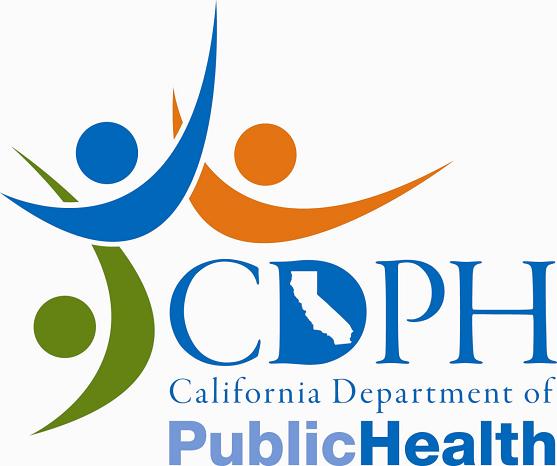 ‘The law will apply to both public and private school students from seventh through 12th grades. Children who are uninsured or underinsured may qualify for the Vaccines for Children Program to get free or low cost immunization services.’ CDPH
‘The law will apply to both public and private school students from seventh through 12th grades. Children who are uninsured or underinsured may qualify for the Vaccines for Children Program to get free or low cost immunization services.’ CDPH
‘For the 2011–12 school year only, children entering 7th–12th grade will need proof of a Tdap shot before starting school. For 2012-13 and beyond, only students entering 7th grade will need proof of a Tdap shot.’ California Dep’t of Public Health
http://www.sacbee.com/2010/12/30/3288473/whooping-cough-vaccine-to-be-required.html
UNITED STATES SCHOOL IMMUNIZATION REQUIREMENTS/EXEMPTIONS: ’All fifty states have legislation mandating specified vaccines for students. Although exemptions vary from state to state, all school immunization laws grant exemptions to children for medical reasons. Almost all states, except Mississippi and West Virginia, grant religious exemptions for people who have religious beliefs against immunizations. Twenty states allow philosophical exemptions for those who object to immunizations because of a personal, moral or other beliefs.’
CALIFORNIA CODE SPECIFICS: ‘(c) Exemptions from immunization for medical reasons or because of personal beliefs.
120370. If the parent or guardian files with the governing authority a written statement by a licensed physician to the effect that the physical condition of the child is such, or medical circumstances relating to the child are such, that immunization is not considered safe, indicating the specific nature and probable duration of the medical condition or circumstances that contraindicate immunization, that person shall be exempt from the requirements of Chapter 1 (commencing with Section 120325, but excluding Section 120380) and Sections 120400, 120405, 120410.
NOTE: (…but excluding Section 120380) – According to the specific wording a registered nurse will have the authority to over-rule your Medical exemption form.
120380. It is the intent of the Legislature that the administration of immunizing agents by registered nurses in school immunization programs under the direction of a supervising physician and surgeon
as provided in Sections 49403 and 49426 of the Education Code shall be in accordance with accepted medical procedure. To implement this intent, the department may adopt written regulations specifying the procedures and circumstances under which a registered nurse, acting under the direction of a supervising physician and surgeon, may administer an immunizing agent pursuant to Sections 49403 and 49426 of the Education Code.
However, nothing in this section shall be construed to prevent any registered nurse from administering an immunizing agent in accordance with Sections 49403 and 49426 of the Education Code in the absence of written regulations as the department is authorized to adopt under this section.’
http://www.ncsl.org/Default.aspx?TabId=14376
http://www.leginfo.ca.gov/cgi-bin/displaycode?section=hsc&group=120001-121000&file=120325-120380
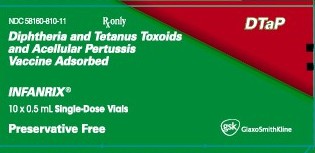 DPaT VACCINE (Diphtheria, Pertussis Tetanus): Diphtheria and Tetanus Toxoids and Pertussis Vaccine Adsorbed SmithKline Beecham Pharmaceuticals 1-800-366-8900 ext. 5231 produced using diphtheria and tetanus toxoids and acellular pertussis adsorbed, aluminum phosphate, formaldehyde, ammonium sulfate, washed sheep red blood cells, glycerol, sodium chloride, thimerosal medium: porcine (pig) pancreatic hydrolysate of casein.
DPaT VACCINE (Diphtheria, Pertussis Tetanus): Diphtheria and Tetanus Toxoids and Pertussis Vaccine Adsorbed SmithKline Beecham Pharmaceuticals 1-800-366-8900 ext. 5231 produced using diphtheria and tetanus toxoids and acellular pertussis adsorbed, aluminum phosphate, formaldehyde, ammonium sulfate, washed sheep red blood cells, glycerol, sodium chloride, thimerosal medium: porcine (pig) pancreatic hydrolysate of casein.
“The following significant adverse events have occurred following administration of DTP vaccines: persistent, inconsolable crying >= 3 hours (1/100 doses), high-pitched, unusual crying (1/1000 doses), fever >= 40.5degC (1/330 doses), transient shock-like (hypotonic, hyporesponsive) episode (1/1750 doses), convulsions (1/1750 doses).”–‘Tetramune’/Wyeth
‘Tripedia’/Sanifo Pasteur: DTaP (Diptheria, Tetanus & Pertussis vaccine) Package insert
http://www.novaccine.com/pdffiles/Tripedia_package_insert.pdf
“I am also a chemist. I just finished reading the spec sheet on Tetramune from the netlink given a few days ago. I was amazed to see the Pertussis portion of the vaccine is prepared in a hydrolyzed form of casein!!!!! In layman’s terms this is a salt version of MILK PROTEIN!!!! Hello – there is the allergy, asthma connection. This has me so angry I can hardly contain myself. My sons life has been ruined because a doctor has no clue. Patrick had already been diagnosed w/ a severe milk allergy!!!! The more I research the more frustrated I become. Hope this info helps.”
http://www.whale.to/vaccines/dpt10.html
Melbourne study finds Thimerosal in “Mercury free” vaccine ‘Infanrix hexa’ –
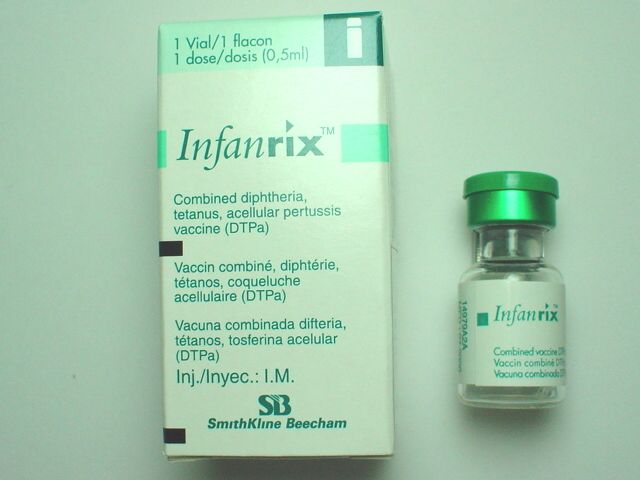 ‘8 vaccines administered to children under the age of 5 yr were assessed for Mercury (Hg) content via a DMA-80 direct mercury analyzer. 7 of the 8 vaccines contained no detectable levels of Hg (less than 1 ppb); however, 1 vaccine (Infanrix hexa) tested positive for Hg at 10 ppb. The result was confirmed and validated by retesting the original sample.
‘8 vaccines administered to children under the age of 5 yr were assessed for Mercury (Hg) content via a DMA-80 direct mercury analyzer. 7 of the 8 vaccines contained no detectable levels of Hg (less than 1 ppb); however, 1 vaccine (Infanrix hexa) tested positive for Hg at 10 ppb. The result was confirmed and validated by retesting the original sample.
Despite the removal of the mercury (Hg)-based preservative Thimerosal from vaccines listed on the Australian Immunization Program Schedule for children, concerns remain among some researchers and parents for the safety of the present schedule, in part due to a fear of residual trace levels of Hg.’
http://www.ncbi.nlm.nih.gov/pubmed/20391108
INFANRIX hexa™ – Given at 6 weeks, 3 months, & 5 months – Combined diphtheria & tetanus toxoids, acellular pertussis, hepatitis B/recombinant, inactivated poliomyelitis & adsorbed conjugated Haemophilus influenzae type b vaccine)
NOTE: This vaccine is a deadly cocktail containing multiple live viruses, Aluminum, Neomycin & Polymixin (antibiotics associated with Kidney Failure, hazardous to fetus), 2 forms of detergent including Polysorbate 80 (Tween80™) which can cause severe allergic reactions, including anaphylaxis) & Formaldehyde (used as a preservative & disinfectant, binds to proteins in your DNA, known to cause cancer, chronic bronchitis, eye irritation when exposed to body’s immune system)
http://gsk.ca/english/docs-pdf/Infanrix-hexa_PM_20080718_EN.pdf
ALUMINUM TOXICITY IN VACCINES ‘Research indicates that patients with impaired kidney function, including premature neonates, who receive injections of Aluminum greater than 4 to 5 micrograms (mcg) per kilogram of body weight per day, accumulate aluminum at levels associated with central nervous system and bone toxicity. This means that for a 6 pound baby, 11-14 mcg would be toxic. The Hepatitis B vaccine given at birth contains 250 mcg of aluminum – 20 times higher than safety levels allow. Babies weigh about 12 pounds (5.5 kg) at 2 months of age when they receive 1225 mcg of aluminum from vaccines – 50 times higher than safety levels.’ Food & Drug Administration
‘The results for aluminum were almost identical to ethyl mercury (Thimerosal) because the amount of aluminum in vaccines goes almost exactly with the mercury.’ Dr. Tom Verstraeten/Epidemiologist
http://www.vacinfo.org/Aluminum%20in%20Vaccines,%20Free%20ebook.pdf
VAERS ID 134249 An infant received the DTaP, HBHepB and IPV vaccines on 2/8/00. Foster mom found her dead 5 days later. Autopsy performed, preliminary conclusion SIDS. (California)
VAERS ID 134118 An infant received the HepB vaccine on 1/24/00. 7 days later she died of apparent SIDS. (Hawaii)
VAERS ID 134070 An infant received the DTaP vaccine on 1/4/00. 3 days later she was found not breathing, with no pulse. Death certificate lists cause of death as SIDS; autopsy revealed no abnormalities. (Ohio)
VAERS ID 133895/134068 A 5 year-old received the DTP, MMR and OPV vaccines on 1/25/00. Subsequently she developed a fever which progressed to seizures on 2/2/00. She then went into a coma, progressing to organ failure. Life support was discontinued and she died on 2/4/00 (10 days later). Says “Reported cause of death” and that’s it. Later her file was updated to say “1 wk post vax, pt devel severe fatal encephalopathy”. (New Jersey)
VAERS ID 133896 An infant received the DTaP, HBHepB and IPV vaccines on 1/13/00. 2 1/2 days after the vaccine she died a sudden death – probably SIDS, coroners report pending. She was fine between the vaccination and her unexpected death. The reported writes “I doubt this is related to the vaccines, but wanting to be thorough”. (Colorado)
VAERS ID 134672 An infant received the DTaP, HIBV, IPV and HepB vaccines on 1/12/00. There were not signs, no symptoms, found dead 5 days later. Autopsy findings (per grandmother) stated that he died of SIDS. (Texas)
VAERS ID 134249 An infant received the DTaP, HBHepB and IPV vaccines on 2/8/00. 5 days later she was found dead. Preliminary autopsy – SIDS. (California)
VAERS ID 151749 An infant received the DTaP, HBHepB and IPV vaccines on 4/4/00. 9 or 10 days post vax she died of SIDS. (Pennsylvania)
VAERS ID 151748 An infant received the DTaP, HBHepB and IPV vaccines on 3/22/00. 26 days later he died of SIDS. Autopsy being performed. (Pennsylvania)
Multiple case reports of DTaP attributed sudden infant death
http://www.whale.to/m/sids.html
